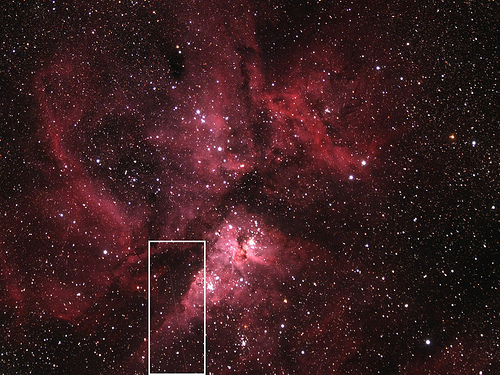By Ashley O’Neill (Contributor) – Email
Print Edition: February 27, 2013
In the last two months, there has been a noticeable amount of space activity around our planet.
One of two major and unrelated occurrences on February 15 was the 143,000 tonne asteroid that glided by our planet just 27,600 kilometres away from our atmosphere. Scientists say this asteroid, named Asteroid 2012 DA14 by NASA, came closer to us than any other cosmic rock of this size, and even closer than some satellites that orbit the Earth.
Unfortunately, we could not see DA14 at all from North America, and even in Asia, Australia and Eastern Europe the asteroid was difficult to see with the naked eye. Astronomers had to use telescopes or binoculars to view the space rock pass over the Indian Ocean in the afternoon.
Fortunately for us, NASA predicts that an object of this size approaches close to earth every 40 years. Even though we missed the DA14, there are other chances for North America to view an asteroid passing by.
DA14 doesn’t seem like a very big asteroid, measuring in at approximately 50 meters wide, but compared with the smaller meteor that hit Russia that same day, the mass of DA14 could do some serious damage if it ever hit earth.
The meteor that hit Russia was the second space event on February 15. The rogue meteor sneaked past the notice of our satellites, flashed across the Russian sky and burst into flames before hitting the Russian landscape. It penetrated the Earth’s atmosphere at over 53,000 kilometres per hour and hit a frozen lake just next to the town of Chelyabinsk, Russia. Even at a size of just 15 metres when it entered the atmosphere, the dangerous sonic boom it caused when it burst into flames shattered windows, damaged roughly 3000 buildings, wiped out the mobile network and injured 1000 people.
Thanks to the amount of active dash cams in Russia, people captured the fireball raining down from the sky from multiple angles.
Jim Green, NASA’s director of planetary science is quoted by CTV News saying that a meteor explosion and an asteroid passing this close by Earth is “very rare and historic.” He goes on to explain how even though smaller meteors enter our atmosphere about once a day, we do not see them because most fall into the ocean or in remote areas. NASA says that most of the “space junk” that hits our atmosphere is too tiny to notice and burn up well before it reaches the ground.
Now, if a meteor of this size can cause such destruction, imagine the destruction that would be caused by a meteor the size of DA14 … or bigger.
On January 10, an asteroid 275 meters wide made its latest pass in a cycle of close approaches to the Earth. The asteroid, named Apophis after an Egyptian mythological demon, came within nine million miles of the Earth, but in the year 2029 there is a rising chance of the asteroid brushing close to Earth just 30,000 km away. This would put Apophis in about the same distance to Earth as the DA14; Apophis would also be traveling through the orbit of our communication satellites. Scientists doubt that Apophis will actually hit the Earth in the near future, but current models predict a chance of Apophis colliding with Earth in 2036. NASA calculated that if Apophis ever does hit the Earth, it would generate a blast equivalent to more than 500 megatons of TNT. (In comparison, the most powerful hydrogen bomb ever detonated, the Soviet Tsar Bomb, released 57 megatons.)
Our planet is at the mercy of huge cosmic entities like roaming asteroids and incoming meteors. NASA would have to know 30 years in advance of an asteroid’s approach to successfully deflect it.
Food for thought: there are only 23 years until the potential collision in 2036.


